Preface & Chapter 1 here. Chapter 2 here. Chapter 4 here.
“I was living with countless death threats,” Lydia Cacho said, “guarded day and night like a criminal by federal agents, and (the pedophiles) whom the authorities knew every last detail went about their business in the world with absolute impunity, smiling free and easy…” Despite the substantial evidence authorities now had, despite Kamel Nacif’s recorded phone calls, and despite public outrage, – Kamel Nacif, Governor Marin, and other known members of Succar Kuri’s international child rape and child porn network weren’t arrested. Not one of these men was investigated. Not one of these men was even questioned. – Lydia Cacho, on the other hand, would now be subjected to three high-stakes court battles: 1). Kamel Nacif’s charge that Lydia Cacho “defamed” him in her book on the child rape and child porn network. 2). Lydia Cacho’s historic charges against Governor Marin and Kamel Nacif for violating her human rights by having her abducted and tortured, and 3). Succar Kuri’s trial for child pornography, in which Lydia Cacho is to appear as a witness. For Lydia Cacho, all these trials took place simultaneously. – Here they’ll be chronicled one at a time.
Trial 1: Kamel Nacif’s charge that Lydia Cacho“defamed” him in her book on the child rape and child porn network.
Mexico does not have freedom of the press. Journalists can be charged with defamation – which is not a civil charge, as it is elsewhere in the world, but a criminal charge complete with jail time. If Lydia Cacho is found guilty of having defamed Kamel Nacif, she will be sent to prison. Even if what she wrote is determined to be true, absolutely true, – if her words are found to have caused Kamel Nacif “harm,” – Lydia Cacho will be sent to prison. In one of the recorded phone conversations between Kamel Nacif and Governor Marin, the Pedo Elites debate whether to lock up Lydia Cacho for one decade, – or two.
Also, police in Mexico don’t generally carry out investigations. Investigations, if they are carried out at all, are carried out by the State Attorney General’s Office at their discretion. (Or rather, at the discretion of the Governor who appointed the State Attorney General. Mexico’s patronage system also may or may not direct Special Prosecutors to investigate high-profile cases should they have political ramifications). But even if a State Attorney General agrees to investigate a particular crime, it is still the victim who must do the investigative work. In Mexico, in general, the onus is on the victim of a crime to investigate the crime committed against them. The victim is responsible for compiling evidence. The victim is responsible for securing witnesses. And the victim must bear all costs. Lydia Cacho must compile her own evidence, secure her own witnesses and bear all costs. For example, she must chase down the camera footage from the toll booths in Merida showing the two female agents weren’t with her, and if the footage is available, and if somebody is willing to find it, and if somebody is allowed to make a copy, and if somebody is willing to make a copy, Lydia Cacho must pay, most likely several “fees.” Lydia Cacho must also hire an attorney to represent her, to navigate the paperwork maze of her case.
The first attorney willing to work with Lydia Cacho failed to submit briefs to the Court as required. Lydia Cacho: “…(A)fter learning that the (new) Judge would not be allowing further evidence because my side had not submitted in time, I had a clear vision of my lawyer seated with Kamel Nacif and Governor Marin’s people…handing over my documents…” The second attorney willing to work with Lydia Cacho asked for obscene sums of money: “They calculated they would need four lawyers working on my case full-time in order to deal with the avalanche of legal requirements. That meant purchasing four round-trip tickets once a week for the eight or nine months they estimated the trial would last. In addition to their fees, we would have to cover the cost of their meals and lodging. I rented an apartment in downtown Cancun for them…” The obscene sums of money procured by this second attorney was the price Lydia Cacho would have to pay for her legal team to not be bought-off.
“I was beginning to understand,” Lydia Cacho said, “that the concerted strategic effort being employed by Kamel Nacif, Governor Marin, and Succar Kuri’s lawyers – a total of half a dozen law firms working against me – consisted of wearing me down physically and financially. Each one of them individually threw the entirety of his legal resources into multiplying the number of summons, (testimonies, verification of information, presentation of witnesses), submissions of additional evidence…and psychological and medical evaluations…I had to juggle. They were so good at it that in one particular week, I was under obligation to appear in courts in Cancun, Mexico City, and Puebla – all on the same day.”
“On top of all this,” Lydia Cacho continued, “the Special Prosecutors for Crimes Against Women and for Crimes Against Journalists were asking me to appear practically every third day [in Mexico City]. The litany was never ending, and so were the costs.” Legal fees paid by Lydia Cacho, Lydia Cacho’s family and numerous feminist friends approached 300 million pesos. “Kamel Nacif had said it on one of the recordings: ‘I’m going to (take Lydia Cacho to court) over and over again, – until she begs for forgiveness.’”
Besides the Pedo Elite effort to break her, the Mexican criminal justice system also tried to break her, as it was designed to do: What in other countries might be considered the illegal treatment of a terrorist suspect is in Mexico the normal course of events for the victims of crime. Lydia Cacho was required to undergo countless invasive and cruel psychological and medical evaluations, but not told when and where these evaluations would take place. Unpredictably, state workers came calling, – at which point Lydia Cacho had to stop whatever she was doing and for the next 10 or 12 hours, talk about the trauma of being tortured. The state workers weren’t there to listen, though. They were there to gaslight the torture survivor.
Lydia Cacho: “The country’s criminal justice system is organized on the assumption that all victims lie… The first evaluation to which the Attorney General’s Office subjected me was carried out by a young inexperienced (woman, who)…showed up in Cancun one day with no warning… I was taken to an office where I was kept from 10 o’clock in the morning until after 9 o’clock at night with no access to either food or drink…”
“At each of these sessions I was asked to describe in ever greater detail not only the facts of what had happened to me, but also the emotions I had experienced, [ostensibly] in order to evaluate the extent of emotional damage caused,” Lydia Cacho said. “The criminologist was questioning me with pointed insistence about every humiliating detail of my torture – Why do you say that you were tortured? How are you going to prove it?…What are you so afraid of – tell me, what is it? Are you aware that there are even crueler tortures…?…Why are you crying?…”
“The authorities use all means necessary to make sure victims fear and distrust the (evaluator),” she explained, “so the (evaluator) can then report that ‘the victim was uncooperative, because he or she was unable to establish a relationship of trust with the examining psychologist…’”
“(Talking later to my own therapist), I couldn’t stop crying, no longer able to tell which was more traumatizing for me – what the agents had done to me, or the systematic abuse on the part of the authorities who were trying to prove no crime had in fact been committed…while stacks of overwhelming evidence were lying patiently on desks of bureaucrats for whom the mere mention of the name Kamel Nacif was enough to set them quaking in their boots.”

*
Lydia Cacho’s attorney called to inform her she would have to take the stand against Kamel Nacif in two sessions, – each session six to nine hours, – the first taking place the next day. Lydia Cacho: “I set the telephone down, paced around my apartment, sat down in the living room and lit a white candle. How do I feel? I asked myself, searching in my breath for an honest answer. What I found were mixed feelings… Part of me wished never to be near them, but another part of me was experiencing a feeling of solid certainty that the only way I had to exorcise the fear I had of my tormentors was to face them head on, with the truth acting as my shield… I wanted to look Kamel Nacif in the eyes, and in this way say: ‘Here I am, you have not destroyed me.’ I’m ready, I told myself. This will be a chance to show them that a woman can stand up to them without fear, to remind them that they are not the masters of the world.”
*
One of the girls at the shelter who was sexually assaulted by Succar Kuri told Lydia Cacho that if she could say something to the man protecting Succar Kuri, she would say, ‘No more corruption.’ Inspired by this, Lydia Cacho and shelter staff had T-shirts printed which read: “No More Pedophiles. No More Corruption. No More Impunity.”
“(The morning I was to face Kamel Nacif),” Lydia Cacho said, “I donned the shirt. When I looked in the mirror before heading out the door, I felt armored by these three simple demands shared by tens of thousands of people. I felt as if the 40,000 people who had taken to the Puebla streets to march in protest and all the other people following the news of my case day in and day out were with me, somehow, in those three phrases. I felt prepared.”
*
Now for the first time Lydia Cacho was in the presence of Kamel Nacif. “(T)he look on Kamel Nacif’s face was one of a man wild with rage,” Lydia Cacho said, “and struggling to keep his cool. I glanced at him calmly, head on. I turned my torso so he could see my shirt. His eyes fixed on the words, and a bright red flush burst across his face.”
The Judge, who it will later be learned was threatened by Kamel Nacif and his lawyers, trembled and sweat. The Judge would not accept the child victims’ transcripted testimonies which Lydia Cacho tried to submit to the Court. Lydia Cacho: “(T)he Judge, avoiding my eyes, stated no connection existed between (this case in which I was charged with defaming Kamel Nacif) and the Succar Kuri case.” The Judge forbade Lydia Cacho from speaking Succar Kuri’s name. Kamel Nacif’s lawyers grinned. – It would now be impossible for Lydia Cacho to defend herself. How could she defend what she had written about Kamel Nacif if she could not submit the evidence – the testimonies of the girls implicating Kamel Nacif? And if she could not mention pedo leader Succar Kuri, how could she explain why she had identified Kamel Nacif as Succar Kuri’s protector?
Succar Kuri had given a television interview in which he’d said, with uber-hubris, so confident of his impunity that he could boast to a television camera in a prison cell, that Kamel Nacif had given him US$300,000 towards his legal defense. Evidence was everywhere that Kamel Nacif was protecting Succar Kuri, even on national television, – yet Lydia Cacho had been forbidden by the Judge deciding her case from even saying Succar Kuri’s name.
To tell the truth about child-rapist Kamel Nacif who would never be charged for his crimes, to be taken to court for “defaming” him, for which you will be imprisoned if found guilty, yet to be prohibited from submitting proof that what you wrote is true – this was completely insane.
*
Eventually, Lydia Cacho’s turn came to cross-examine Kamel Nacif. Lydia Cacho: “I asked him calmly, watching as his eyes darted away from mine every time I attempted to hold his gaze, why he was funding the defense of the pedophile Succar Kuri. And though the Judge would not allow the question to stand, the businessman’s lawyers could not stop their client from leaning forward towards me in his seat, like a panicky bull readying himself for the charge, snarling, ‘Goddamn you fucking lady.’” (Effectively admitting being patron to the pedo).
Kamel Nacif’s sweatshop-owing associate who was taped suggesting to Kamel Nacif that Lydia Cacho be raped in jail by women prisoners, only to have Kamel Nacif reply that that had already been arranged, was presented as a character witness for Kamel Nacif. ‘Kamel Nacif is an upstanding man,’ the associate testified, ‘incapable of committing the disgusting acts (Lydia Cacho accused him of in her book).’ Lydia Cacho: “Staring at him straight in the eye, I…ask(ed) him if he considered it an example of upstanding behavior to have ordered the prisoners at the jail to rape me and beat me. To the utter shock of all present, his white skin turned crimson as he spat despotically, and replied, ‘That rape was never carried out in the end.’ His lawyers gaped in horror, but his words had already been taken down by the stenographer. I felt like a soccer player who’d just managed to slip the ball past the unbelieving eyes of the goalie, right straight to the back of the net, in a single, clean, glorious shot.” (Effectively admitting criminal collusion).
*
Several months later, on September 29, 2006, Lydia Cacho had her second and final session with Kamel Nacif. “When I entered the room,” Lydia Cacho said, “while the Public Ministry official was finalizing preparations and everyone was getting settled in their seats, I walked straight over to Kamel Nacif, who was leaning up against one of the walls. I positioned myself directly in front of him, standing very close, and informed him quietly, ‘Kamel, every time you look in my eyes, all those abused girls will be looking back out at you.’ I retired quickly, and he fixed me with a look of disbelief and hatred that was captured perfectly by the several video and still cameras in the room.”
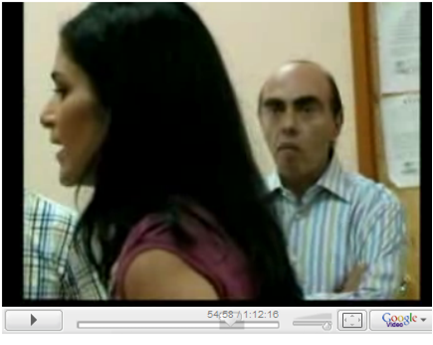
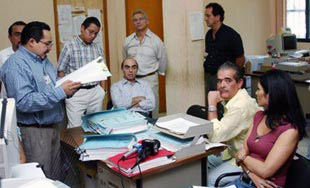

Kamel Nacif said Lydia Cacho’s public statements that he raped children and that over 100 female workers in his sweatshops filed sexual harassment claims against him had caused him to lose export orders, – though he did not bother documenting said lost orders. Lydia Cacho: “As the session was drawing to a close, when it became clear Kamel Nacif couldn’t prove the ‘millions in losses’ his textile factories had, according to him, suffered as a result of the words I had written, Kamel Nacif flew into a rage. His lawyers, frantically chewing their gum, could do nothing to calm his furor… The Judge whispered to me, ‘Step over there. You don’t want to get yourself beaten up.’”
This trembling sweating Judge who was too afraid to call for order at this hearing he presided over, would now deliberate on whether or not Lydia Cacho would be locked up. Lydia Cacho does not know if these are her last days of freedom until this Judge rules.
*
When this second and final session with Kamel Nacif was over, Lydia Cacho went to the shelter to be with the girl survivors. “For years, these girls and women believed their rapists to be untouchable, all-powerful beings,” Lydia Cacho said. “Now their tormentors were human, plain and simple, and standing up to them was a woman just like them.”
‘We are all Lydia Cacho,’ the mother of one of the girls said to Lydia, lovingly. Lovingly, Lydia replied: ‘And Lydia Cacho is all women. We are in this together.’
*

On January 2, 2007, Lydia Cacho, Kamel Nacif, and their lawyers came to Court to hear the Judge’s ruling. To the astonishment of everyone present, the Judge threw out the case. Kamel Nacif does not win his case against Lydia Cacho. He cannot say she defamed him. Lydia Cacho is absolved. Lydia Cacho will not go to prison.



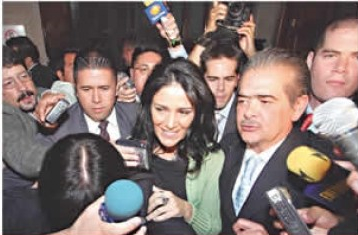
*
Kamel Nacif followed up this stinging loss by suing Lydia Cacho in 2008. Having lost his criminal suit against her, he was now pursuing a civil suit for damages, – and had signed on Emma as co-plaintiff.
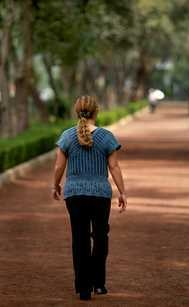 Emma, now 24, wrote Lydia Cacho to say Kamel Nacif’s attorneys had her sign an agreement in English which she didn’t understand, in exchange for money. Yet Emma did show up to personally testify against Lydia Cacho, no doubt under duress, clearly still Stockholmed, – though she told the media she now felt all parties involved had betrayed her. Kamel Nacif’s and Emma’s civil suit alleged Lydia Cacho had exposed their “private affairs, and therefore, Lydia Cacho and her publishers owed them millions of pesos for making their “private information” public in her book. The suit also alleged Lydia Cacho was not a journalist because she did not hold a professional credential. “A group of the country’s most renowned journalists had to testify before the Court,” Lydia Cacho remarked of the absurdity, “that I am indeed a journalist.” In the suit, Kamel Nacif offered Lydia Cacho and her publishers the option of paying damages or letting him rewrite her book.
Emma, now 24, wrote Lydia Cacho to say Kamel Nacif’s attorneys had her sign an agreement in English which she didn’t understand, in exchange for money. Yet Emma did show up to personally testify against Lydia Cacho, no doubt under duress, clearly still Stockholmed, – though she told the media she now felt all parties involved had betrayed her. Kamel Nacif’s and Emma’s civil suit alleged Lydia Cacho had exposed their “private affairs, and therefore, Lydia Cacho and her publishers owed them millions of pesos for making their “private information” public in her book. The suit also alleged Lydia Cacho was not a journalist because she did not hold a professional credential. “A group of the country’s most renowned journalists had to testify before the Court,” Lydia Cacho remarked of the absurdity, “that I am indeed a journalist.” In the suit, Kamel Nacif offered Lydia Cacho and her publishers the option of paying damages or letting him rewrite her book.
By 2013, the suit had ricocheted its way all the way up to the Mexican Supreme Court, – where Kamel Nacif, et al, lost. Lydia Cacho and her publisher were cleared of any wrongdoing. The contents of The Demons of Eden were determined to have appropriately placed the general public’s interest first. This was a first in Mexico. – A step towards democracy. – To rule that it was appropriate to place the general public’s interest first.
*
In response to Lydia Cacho’s case, a federal law was passed making defamation not a criminal charge with jail time, but, as elsewhere in the world, a civil charge. However, the laws of Mexican States supersede Mexican federal law, and so it remains to be seen if the 31 Mexican States will adopt this legal precedent. Nevertheless, along with the Supreme Court decision that it is appropriate to place the general public’s interest first, decriminalizing defamation for journalists is a startling legal precedent for Mexico, sweetening Lydia Cacho’s victory. – Not only did she set a new bar for freedom of the press, she beat back a multi-millionaire Pedo Elite in a justice system devised explicitly for him and explicitly against her, – and did it twice.
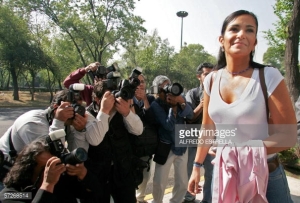 *
*
Trial 2: Lydia Cacho’s historic charges against Governor Marin and Kamel Nacif for violating her human rights by having her abducted and tortured.
When the taped calls between Governor Marin and Kamel Nacif went public, Lydia Cacho charged Governor Marin and Kamel Nacif with violating her human rights for ordering her torture in the car and in jail. No one had ever done this in Mexico before; human rights violations were common, but they weren’t recognized in Mexican Courts, and it seemed unlikely the case would be heard. “My lawyer was clear in his forewarning that I had no chance whatsoever of winning the case,” Lydia Cacho said, “or even having it investigated properly.” Nevertheless, Lydia Cacho brought federal corruption charges against Governor Marin, Kamel Nacif, Puebla Judge Rosa Celia Perez Gonzalez, who had authorized Lydia Cacho’s abduction and detention, and Puebla Attorney General Blanca Laura Villeda Martinez, who had arranged Lydia Cacho’s jail torture and assault. She charged them with abuse of power, influence peddling, criminal collusion, abduction, torture and rape in retaliation for having exposed Governor Marin’s and Kamel Nacif’s links to the international pedophile network. Lydia Cacho filed these charges despite of the fact no charges of any kind can be brought against a Mexican Governor; Mexican Governors are immune from prosecution by law. (Kamel Nacif, though not a Governor, financed Mexican Governors’ political campaigns, including Governor Marin’s, and so would also in effect be immune from prosecution, as would Governor Marin’s two appointed handmaidens – all of them likely viewed as logical extensions of a Mexican Governor’s unfettered power).
On April 18, 2006, the Mexican Congress stunned the country by requesting that the Mexican Supreme Court hear Lydia Cacho’s case. Unbelievably, the Mexican Supreme Court agreed to hear Lydia Cacho’s case.
Not only would Lydia Cacho be the first to bring federal corruption charges against a Governor (and Judge and Attorney General), Lydia Cacho would also be the first woman ever to bring a case before Mexico’s Supreme Court, the first woman ever to testify before the Supreme Court’s ten Justices, and the first woman ever to have a human rights and women’s rights case heard by Mexico’s highest Court.
*
Four months later, Lydia Cacho’s case file was stolen. The file contained irreplaceable evidence against Governor Marin and Kamel Nacif. “It was the most complete, extensive dossier regarding my case in existence,” Lydia Cacho said, “and if it were to fall into Governor Marin’s hands, he would have access to the names of my key witnesses.” The Mexican Human Rights Commission erroneously told the press that the theft of Lydia Cacho’s case file was unrelated to Lydia Cacho’s case.
One month later, Mexico’s Supreme Court declared insufficient evidence had been presented for the Court to hear Lydia Cacho’s case. But the Court then made an unprecedented announcement. Lydia Cacho: “(T)o my complete surprise and that of my lawyers, the Supreme Court ruled 7-3 in favor of widening the scope of the inquest.” A subset of Supreme Court Justices headed by Justice Silva Meza would form a Special Investigative Commission to investigate the criminal conspiracy against Lydia Cacho themselves. An ecstatic Lydia Cacho told the press: “This is historic. This is monumental. The Mexican Supreme Court is saying it will dare to investigate public servants who collude with organized crime to shut journalists up.” Unbeknownst to the parties involved, the Special Investigative Commission ordered 21 wiretaps, – eavesdropping on Governor Marin, Governor Marin’s wife, Kamel Nacif, Kamel Nacif’s ex-wife, the Puebla Judge, the Puebla State Attorney General and other public officeholders. The Commission also heard the testimonies of the child victims. (Of those who stepped forward, many dropped out after receiving death threats from Succar Kuri and his wife, or after accepting his money and signing retractions. One girl was moved to another state by her uncle, who took the pedophile’s money in exchange for her silence. Many others, of course, never came forward – fearing for their lives. Twenty-three victims of the Pedo Elites, however, stood together to give the Commission their testimonies). All parties named in the lawsuit were called to testify, as was Lydia Cacho.
On June 26, 2007, the Special Investigative Commission assembled to announce its findings. Lydia Cacho and her attorney were present as the session was called to order, as was the press. Lydia Cacho: ‘What a surprise was in store for us!’ For the very first time in Mexican history, a full and thorough investigation of human rights and women’s rights had been conducted by the highest court of the land…’
Justice Silva Meza read aloud: The Special Investigative Commission has determined that the Governor and his associates ‘conspired to apprehend and torture Lydia Cacho, whose journalistic work uncovered a network of political and financial forces supporting and protecting child pornography and pedophilia rings.’ Lydia Cacho fought back tears. Speaking on the Commission’s behalf, Justice Silva Meza revealed that 30 high-ranking government officials had been involved in the criminal conspiracy against Lydia Cacho, – far more than even she realized.
A court clerk suddenly interrupted. He said he must now read a statement on behalf of another Supreme Court Justice who had ‘lost his voice’ and could not read the statement himself. The statement requested the Court withhold its ruling on the Lydia Cacho case ‘until such time as the rules for reaching a determination have been decided upon.’ Justice Silva Meza was visibly taken aback. After the session was adjourned,  Governor Marin’s lawyers brazenly told the press the Justices had heeded their warning to protect the Governor. Lydia Cacho was devastated. It was unclear what this rift between the Justices meant for her case, – except it would now be stalled.
Governor Marin’s lawyers brazenly told the press the Justices had heeded their warning to protect the Governor. Lydia Cacho was devastated. It was unclear what this rift between the Justices meant for her case, – except it would now be stalled.
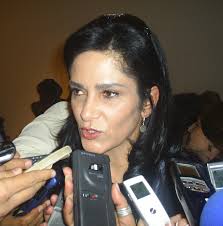
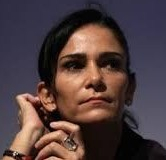
*
Lydia Cacho, meanwhile, was being tailed. A woman with the Governor’s office forwarded her documents faxed to the Governor by two investigators, reporting her movements and transcribing her calls. “As I went through these documents,” Lydia Cacho said, “I was astonished to find accounts about people with whom I had gone to lunch or dinner at one point or another…” The two investigators, the woman said, worked for Kamel Nacif. The ‘two investigators’ – Montano and Perez – had been living in Cancun for the past two months at Succar Kuri’s Solymar Villa.
A week later, Lydia Cacho met with her therapist to discuss the sudden onset of nightmares.
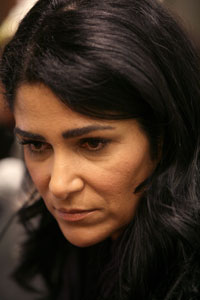
Arrest warrants were issued for Montano and Perez for the torture of Lydia Cacho. A federal police agent who was in the end not picked for either the abduction or jail job had reported that he and others received direct orders from the Puebla Attorney General’s Office to ‘fuck Lydia Cacho up, you know, – beat her up or kill her,’ – which had resulted in the arrest warrants for Montano and Perez.
The men who had tortured and raped Lydia Cacho began calling her, again and again – detailing how she would die. A dead Lydia Cacho wouldn’t take the stand against them, and so Montano and Perez were now personally motivated to kill her.
Yet despite the arrest warrants, Montano and Perez weren’t picked up. No one knew, the authorities told Lydia Cacho and her attorney, where these two men were. Eventually, the matter was dropped. Lydia Cacho would later learn Quintana Roo’s Governor had had the matter dropped, – and that Governor Marin had called him afterwards – just to say thanks.
*
Thirty days after the Special Investigative Commission’s findings were abruptly stalled, they were just as abruptly officialized and made public in a 1,205-page document. Lydia Cacho: “(T)he Supreme Court’s Investigative Commission unraveled and laid out, step by step…the criminal conspiracy against me.” On behalf of the Investigative Commission, Justice Silva Meza wrote: “Journalist Lydia Cacho did not go far enough in her book. The journalist’s book does not begin to tell it all.”
The full Mexican Supreme Court would now convene to deliberate on Lydia Cacho’s case. They would now consider whether Governor Marin, Kamel Nacif, the Puebla Judge and Attorney General were guilty of federal corruption, abuse of power, influence peddling, criminal collusion, abduction, torture and rape. They would would rule whether Lydia Cacho’s human rights were indeed violated.
*
Puebla Governor Mario Marin, the man who gave the two goons orders to terminate Lydia Cacho, the man who gave the two handmaidens orders to crush her, could, if Lydia Cacho wins this case, be impeached. (Not imprisoned; just impeached). Yet the threat of impeachment had never before presented itself to a Mexican Governor. To combat this threat, Governor Marin spent 500 million pesos of taxpayer money on a scrub campaign to sanitize his image. Additionally, the lawyers defending him, their fine meals, their luxury hotel stays and transport in private plush “air limousines” were also paid for by taxpayer money – a staggering 3.5 billion pesos.
International and national investigative agencies will later inform Lydia Cacho that Governor Marin’s criminal activities were extensive. The Mexican Special Investigations on Organized Crime (SEIDO), the Mexican Bureau of Investigation and National Security (CISEN), the US Drug Enforcement Agency (DEA), the US Immigration and Customs Enforcement Agency (ICE), the International Criminal Police Organization (Interpol) and the Merida Initiative (an intelligence collaboration between the US, Mexico and Central America to fight organized crime, money laundering and drug-trafficking) were all aware of Governor Marin’s criminal activities.
Lydia Cacho: (T)he DEA uncovered the existence of a company owned by Governor Marin called Millennium Air Service… The company was created with the illegal allocation of US$66.4 million of public funds for the purchase of a fleet of helicopters and airplanes (made) by Marin’s son…” The Governor’s son acted as front man in these acquisitions. The Govenor’s son now lived in Wels, Austria, ‘one of the most exclusive regions of the world,’ according to a Mexican reporter who tracked him down, ‘renowned as a refuge for princes, kings, magnates, and the Hollywood elite…’ Intelligence officials determined Governor Marin’s son had not held any job which might have afforded him this lifestyle.
According to Interpol, Governor Marin owned seven 407-model Bell helicopters worth US$21 million, two 206 Bell helicopters and two Augusta helicopters worth US$16 million, two Cessna 2008 XA-TWT aircraft worth US$600,000, a Dassault Falcon 20 plane worth US$350,000 a Sabre Cinergo plane worth US$300,000 and four Learjet 45s, worth about US$8 million each, or about US$32 million for all four Learjets. The Governor of one small Mexican State, in other words, owned nineteen aircraft.
The US Immigration and Customs Enforcement Agency (ICE) found illicit transportation of undeclared cash in Marin’s aircraft, with probable links to organized crime. Large sums of money were moved from Mexico to Texas and Florida. Because heads of drug cartels had also flown on the Governor’s aircraft, in one case to successfully evade an arrest-in-progress, ICE used diplomatic channels to request special attention be paid to all aircraft registered in the Marin name.

Lydia Cacho: “One of the young Mexican girls who had fallen victim to the Cancun sex trafficking network affirmed in a statement in 2004 that three American girls from Florida were brought over on a large private plane which they said belonged to a Governor…” According to Interpol: ‘(Governor Marin) is known to have a penchant for underage women (sic).’ A General on the Merida Initiative’s Intelligence Team told Lydia Cacho that Governor Marin had ‘a history of protecting pedophiles,’ but, he said, the President of Mexico, when given this intelligence, did nothing. Intelligence agencies knew Governor Marin was protecting Succar Kuri. Lydia Cacho: “Marin was under close scrutiny [by intelligence agencies]…for protecting a criminal network involved in the sex trafficking of minors, and yet his businesses and ties to dangerous friends were allowed to continue…”
*
On November 29, 2007, Lydia Cacho was about to present her new book, Infamy, at a book launch, – a book launch the Pedo Elites had tried but failed to stop, – when the Supreme Court announced it would now make its final ruling on the Lydia Cacho case. Due to widespread public interest, the Supreme Court’s final ruling was about to be broadcast live on national television, – something which had never happened before in Mexico, a country where the Supreme Court has not even had to make its rulings public.
Lydia Cacho, with family, friends and journalists, found a bar, where they could watch the Supreme Court’s proceedings on television. Lydia Cacho: “My lawyer was there in the chamber along with the Governor’s seven and the human trafficker’s [Kamel Nacif’s] five. The solemnity and tension in the room were palpable even on screen. The court crier announced the order in which the Justices would speak and then proceeded to explain that this was one of the most closely followed Supreme Court cases in the country’s history.”
Of the ten Justices on Mexico’s Supreme Court, Justice Silva Meza spoke first: ‘The violation of the human rights of the journalist Lydia Cacho as a result of the concerted actions of the Governor of the State of Puebla and the authorities of the State Attorney General’s Office and the Court of Justice of the same has been irrefutably established.’ Justice Silva Meza then read out the names of the accused. Justice Silva Meza and the three male Justices who spoke after him ruled in favor of Lydia Cacho. The four remaining male Justices ruled against Lydia Cacho. Justice Aguirre, one of the four male Justices ruling against, said: ‘(T)housands of people are tortured in this country – what is this woman complaining about? What makes her so different or so much more important that the Court should trouble itself with one individual case?’
The ruling was now 4-4, with two female Justices remaining, – one a conservative, and one pro-feminist. The conservative female Justice voted against Lydia Cacho, – bringing it to 5-4 against. The pro-feminist Justice, Justice Olga Sanchez Cordero, a blond-haired woman, adjusted her glasses repeatedly as she read her statement. She then began to stutter. ‘Crimes had indeed been committed,’ she said. ‘But said crimes were not very serious in nature.’ The pro-feminist Justice ruled against Lydia Cacho, deciding her human rights had not been violated by being abducted, tortured and raped, with a final ruling of 6-4 against Lydia Cacho. “To the utter astonishment of those watching,” Lydia Cacho said, “(the pro-feminist Justice) exonerated the Governor and his accomplices.”

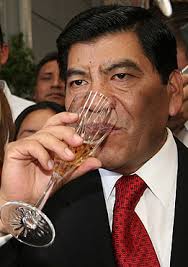
“Silence filled the bar and I realized every person there was staring at the television screen [in shock],” Lydia Cacho said. “Then, here and there, people hung their heads, buried their faces in their hands, and more than one journalist began to offer insults [at the television].” The mafias have gained control of the Supreme Court, Lydia Cacho thought to herself. She knocked back her tequila and set down her shot glass. Lydia Cacho went up to her hotel room and cried. She wished her mother was alive.

*
Lydia Cacho later alleged some of the Supreme Court Justices – who 48 hours earlier looked as if they would rule in her favor, – were paid off by the Governor’s attorneys. Lydia Cacho heard this from a person close to those attorneys, but could not substantiate it. “Pro-feminist” Justice Olga Sanchez Cordero, however, did later admit she ruled against Lydia Cacho after coming under ‘extreme political pressure.’
*
In January 2010, the four Supreme Court Justices who ruled in Lydia Cacho’s favor published a book in her defense. This was startling, – the first book Supreme Court Justices ever published about a case – and to condemn its verdict. The Justices said they took this unprecedented step because they found the mafia’s influence on the Supreme Court’s ruling deeply unsettling. In The Ways of Power: The Lydia Cacho Case, the Justices declared: “(T)he journalist’s fundamental rights were seriously violated… (T)he authorities under indictment are protecting and promoting pedophilia and child pornography networks.” By 2016, this book had inspired 16 law school theses in Mexico, and become required reading for the degree in human rights and jurisprudence.
*
Also in 2016, a decade after the abduction, Montano and Perez were finally arrested. Montano and Perez have been charged with the torture of Lydia Cacho. That outcome is pending.






